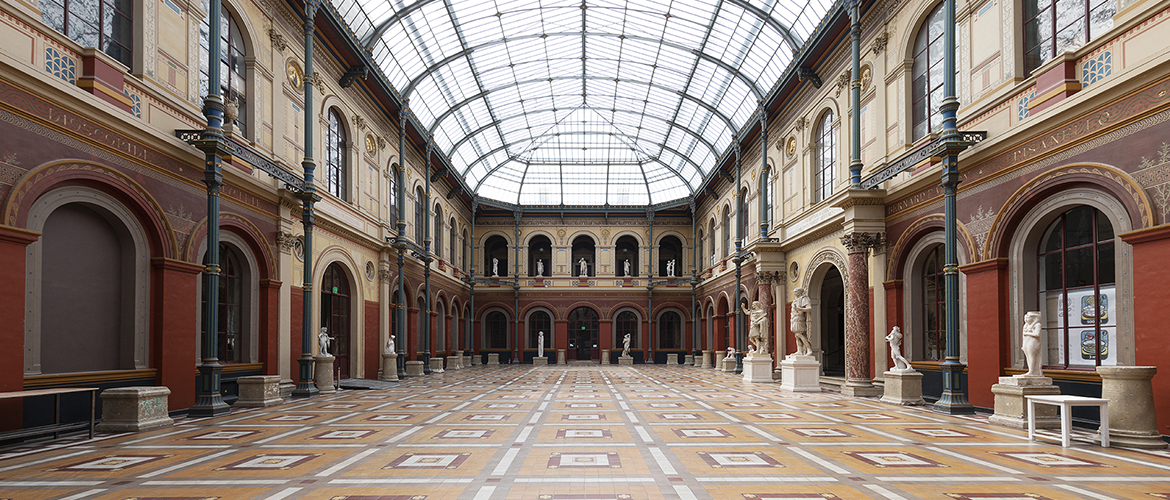Missions
Beaux-Arts de Paris is a place of artistic instruction and experimentation, exhibitions and conservation of historical and contemporary collections, as well as a publishing house. Heir to the Académie Royale de Peinture et de Sculpture, founded in the 17th century by Louis XIV, Beaux-Arts de Paris is a public institution under the responsibility of the French Ministry of Culture. Its first mission is to educate and train students planning to devote themselves to high-level artistic creation. Beaux-Arts de Paris occupies an essential place on the world stage of art and culture. In accordance with the educational principles that have always prevailed in the School, the course is studio-based under the guidance of renowned artists and is supplemented by a range of theoretical and technical teaching. It provides students with the fundamental elements they need to develop and sustain their personal artistic undertakings, and a full understanding of what is at issue in making art today.
Beaux-Arts de Paris is a member of Université Paris Sciences & Lettres (PSL), a community of 25 prestigious Parisian educational institutions.
Saint-Germain-des-Prés and Saint-Ouen
Beaux-Arts de Paris is located on two sites.
The Parisian institution, located in Saint-Germain-des-Prés, spreads over two hectares. This includes numerous studios, three amphitheatres, a library specialising in contemporary art as well as two exhibition spaces, the Palais des Beaux-Arts and the Cabinet des dessins Jean Bonna.
In 2008 Beaux-Arts de Paris opened a second site in Saint-Ouen. A large 1 000m² area, located in the flea market district. It includes studios and spaces for sculpture, mosaics, modelling, mould making, a foundry, composite materials practices and ceramics.
It also hosts Via Ferrata. Set up in September 2016, this state-sponsored preparatory course prepares 25 students from diverse backgrounds for entrance exams to renowned artistic education establishments. Via Ferrata benefits from the support of Fondation SNCF.
History of the buildings
Beaux-Arts de Paris today is a vast complex spreading over an area of more than two hectares between the rue Bonaparte and the Quai Malaquais. Most of the buildings date from the 17th to the 19th centuries; some are from the 20th. Heir to the Académie Royale de Peinture et de Sculpture, the institution, founded in 1648 by Mazarin, was dissolved by the Convention in 1793. During the Empire, the École académique and the Académie d’architecture merged and created the École des Beaux- Arts.
The École was successively located in the Louvre, in the Collège des Quatre-Nations, rue Mazarine, and then on the site of the former Couvent des Petits-Augustins, rue Bonaparte. The oldest buildings are the chapel and its annexes, erected in the early 17th century as part of the monastery. During the French Revolution and the Napoleonic era, the architect Alexandre Lenoir (1761-1839) converted the premises into the Musée des Monuments Français, a museum with several extraordinary works of French sculpture. When the museum was closed in 1816 by Louis XVIII, religious works were restored to the Church, some monuments reinstalled in their original site, and the buildings were allotted to the École des Beaux-Arts.
The architect François Debret (1777-1850) was subsequently commissioned to design additional buildings. He first constructed the Bâtiment des Loges, an essential facility for competitions, then began work on the Palais des Études. Debret was succeeded by his pupil and brother-in-law Félix Duban (1797-1872), who continued the Palais des études and the exhibition building overlooking the Quai Malaquais (Palais des Beaux-Arts). He also redesigned the entrance courtyards on the rue Bonaparte side, the chapel, and what had been the monastery cloister (Cour du Mûrier).
In some cases Duban re-used quite disparate architectural and decorative elements that had remained in place after the Musée des Monuments Français was closed and its collections dispersed, thereby endowing the whole with an undeniable esthetic unity.
In 1883, in what was to be its last extension, the École acquired the Hôtel de Chimay and its outbuildings, dating from the 17th and 18th centuries, located at 15 and 17 Quai Malaquais.
Status and legal framework
An administrative national public institution placed under the supervision of the French Ministry of Culture, the École nationale supérieure des Beaux-Arts is governed by Decree No 84-968 of October 26th, 1984.
The Executive Board, voting decisions, sets strategic orientations and approves the budget.
The Education Board, presided by the Director, is consulted on topics related to education. It gives advisory opinions and gathers at least twice a year. In addition to the Director, the Education Board is comprised of two members appointed by the Director, fifteen elected teachers and three student representatives.
The decision of September 19th, 2016, on the organisation of admission and courses of the École nationale supérieure des Beaux-Arts, sets the framework for the training courses. It is completed each year by the studies and tests regulation. The rules of procedure indicate the functioning conditions of the establishment, regarding logistics and safety. Every student admitted to Beaux-Arts de Paris receives a copy of each regulation and acknowledges having read and understood them.
Head photo: © Jean-Baptiste Monteil
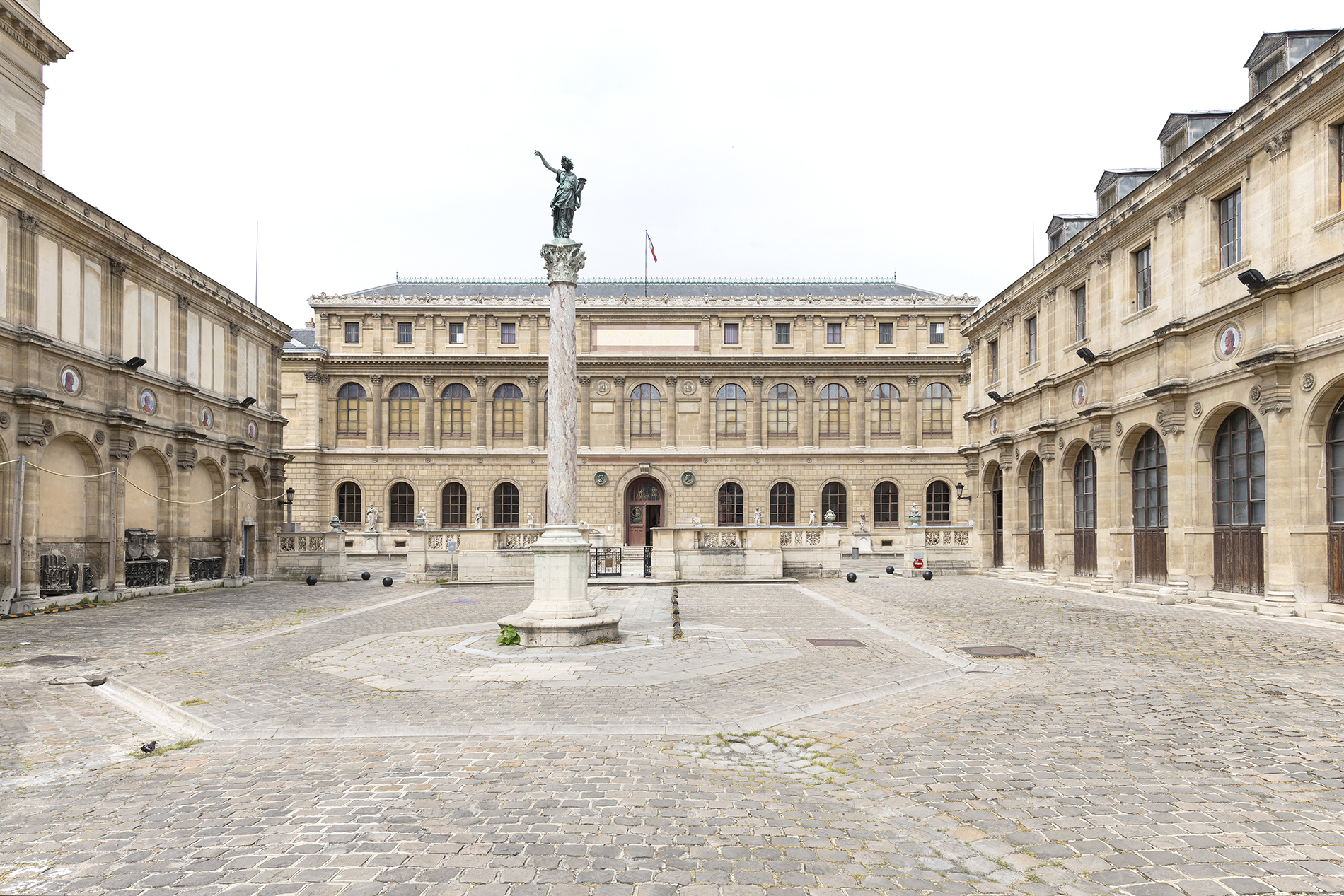
Cour Bonaparte et Palais des études © Jean-Baptiste Monteil
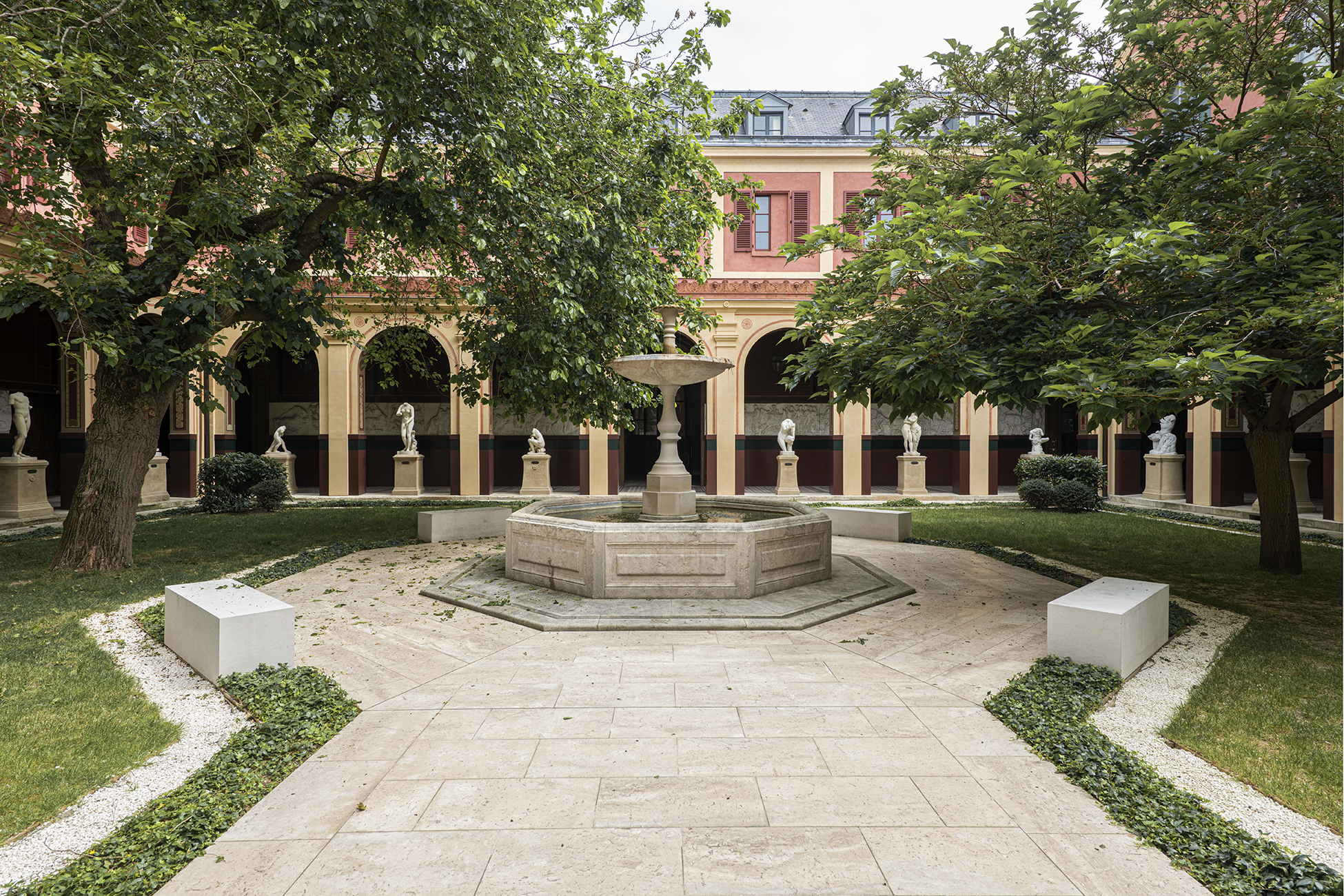
Cour du mûrier © Jean-Baptiste Monteil
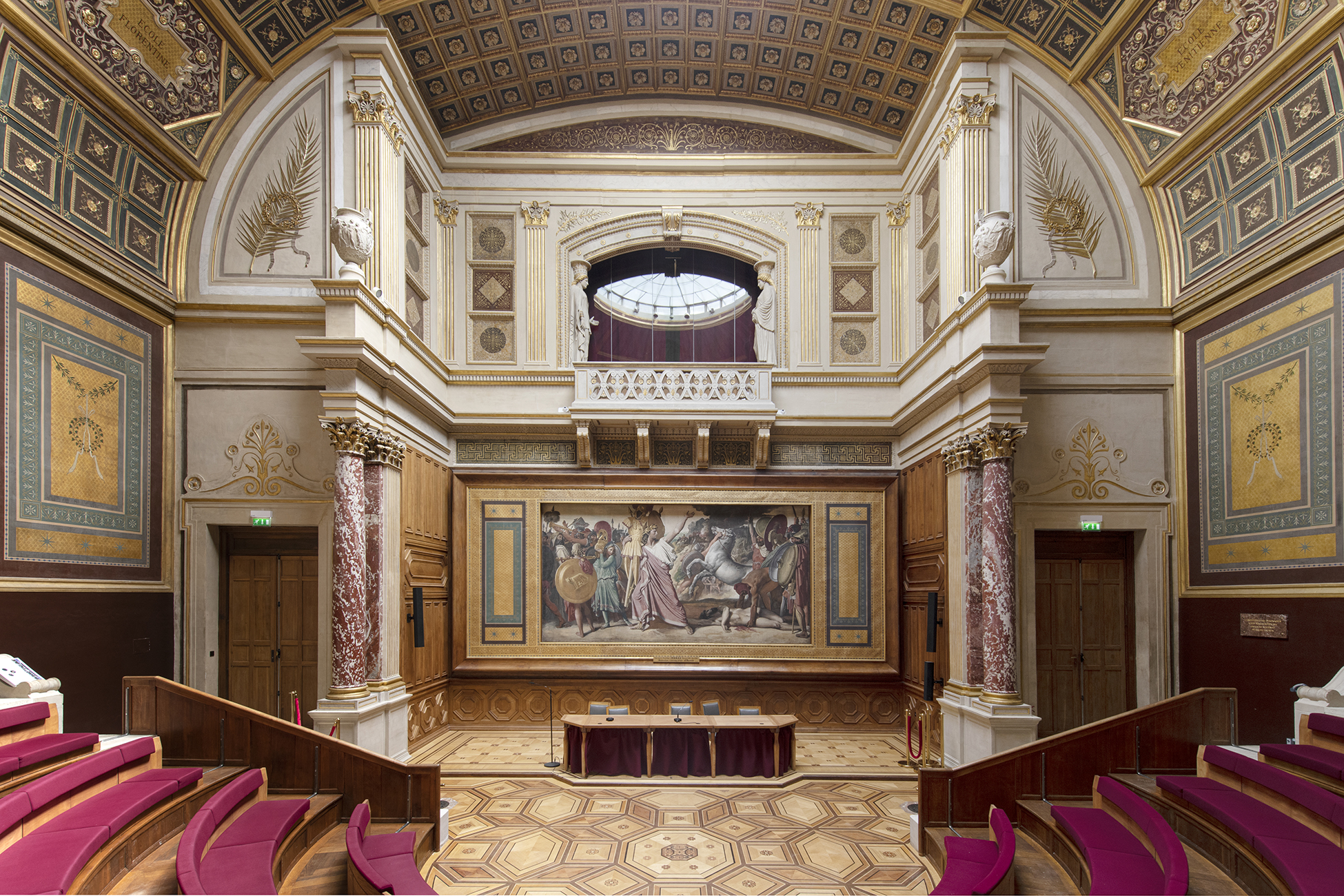
Amphithéâtre d’honneur © Jean-Baptiste Monteil
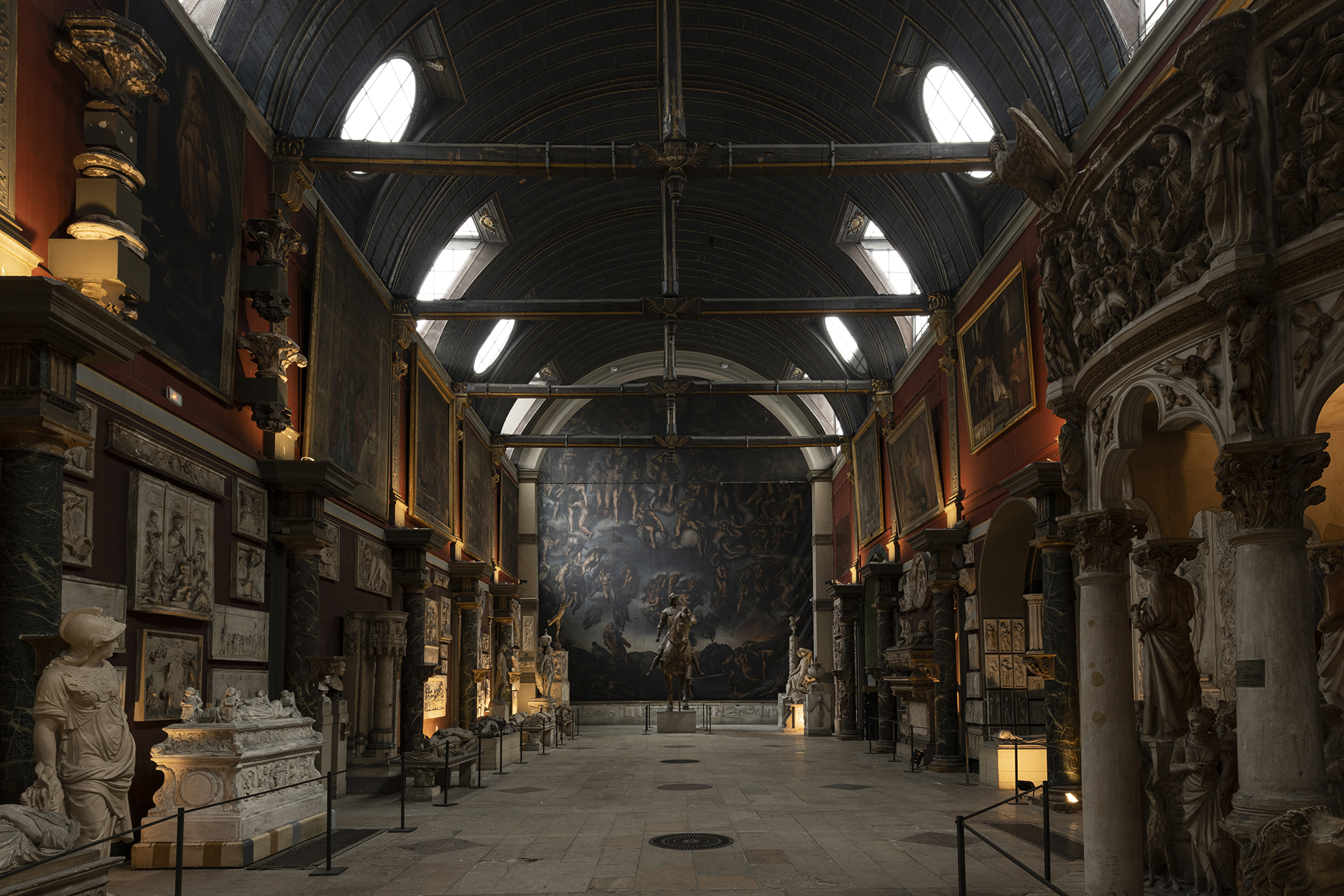
Chapelle des Petits Augustins © Jean-Baptiste Monteil


